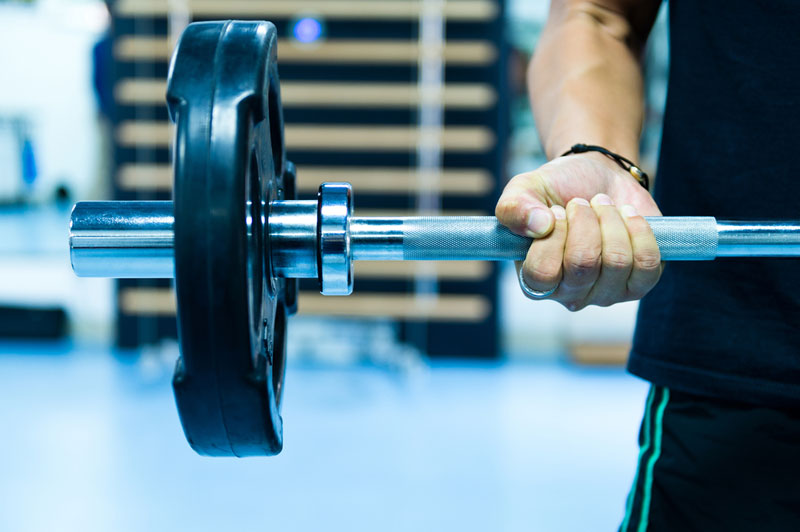A Teen's Muscle Soreness Turned Out to Be This Life-Threatening Condition

A Texas teen who felt extremely sore after a hard gym workout turned out to have a rare and potentially life-threatening condition called rhabdomyolysis. But how do you tell the difference between run-of-the-mill soreness and rhabdomyolysis?
The teen, Jared Shamburger, had recently signed up for a gym membership with his family, according to local news outlet KTRK. His older brother and dad had been weightlifting for years, and Shamburger wanted to "catch up" with them. "I have to go hard fast," Shamburger, who is 17, told KTRK.
But after a 90-minute weightlifting session, Shamburger said he felt particularly sore. "Everything hurt. It hurt to the touch. It was swollen," he said.
When the teen's soreness and swelling didn't go away, his mom, Judy Shamburger, looked up his symptoms online, and realized her son might have rhabdomyolysis. Her suspicion was right. The teen was diagnosed with the condition, sometimes referred to as "rhabdo," and hospitalized for five days, KTRK reported. [7 Strange Signs You're Having an Allergic Reaction]
Rhabdomyolysis is a rare condition in which damaged muscle tissue breaks down rapidly, and releases a protein called myoglobin into the blood, according to the U.S. National Library of Medicine (NLM). Myoglobin can be harmful to the kidneys, and the condition can lead to kidney failure, which means the kidneys stop working properly and can no longer meet the body's needs.
The condition can be caused by severe exertion, such as marathon running, or in Shamburger's case, intense weightlifting. Other causes include trauma (such as injury in a car accident), use of certain drugs and heatstroke.
Although you might expect to be sore after a workout, with rhabdomyolysis, the soreness can be a lot more intense, said Dr. Bryant Walrod, a sports-medicine physician at The Ohio State University Wexner Medical Center who was not involved with Shamburger's case. In addition, patients with rhabdomyolysis often experience pain and muscle weakness along with soreness, Walrod said.
Sign up for the Live Science daily newsletter now
Get the world’s most fascinating discoveries delivered straight to your inbox.
Another key symptom of rhabdomyolysis is dark-colored urine, which is caused by myoglobin spilling into the urine, Walrod said.
"If you see [dark-colored urine], that is a certain indication to get seen quickly," Walrod told Live Science. People who suspect they have rhabdomyolysis should receive urgent medical evaluation, he said. Treatment for rhabdomyolysis may include intravenous fluids and, in some cases, dialysis, according to the NLM.
Although rhabdomyolysis is rare, it underscores the importance of listening to your body when trying to get back into shape, and not pushing through intense pain during a workout, Walrod said. Staying hydrated is also very important, and can reduce the risk of rhabdomyolysis, he said.
Shamburger is expected to make a full recovery, KTRK reported.
Original article on Live Science.

Rachael is a Live Science contributor, and was a former channel editor and senior writer for Live Science between 2010 and 2022. She has a master's degree in journalism from New York University's Science, Health and Environmental Reporting Program. She also holds a B.S. in molecular biology and an M.S. in biology from the University of California, San Diego. Her work has appeared in Scienceline, The Washington Post and Scientific American.










